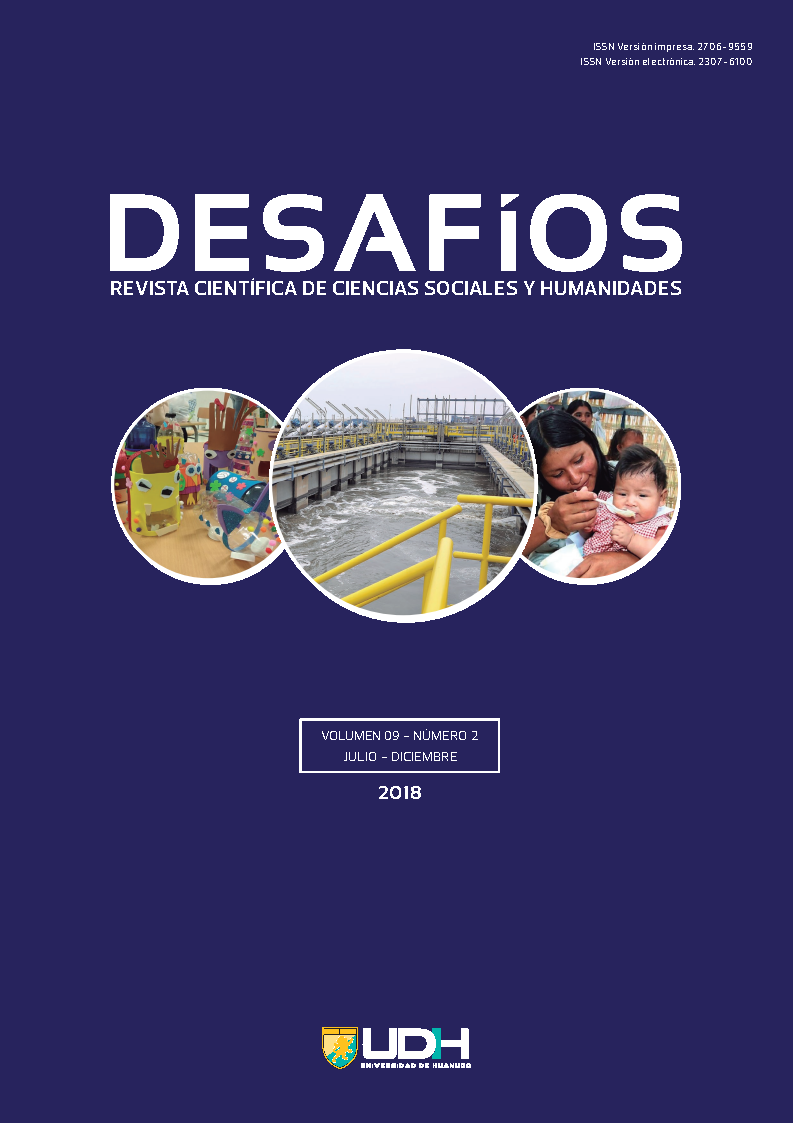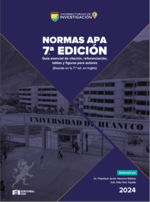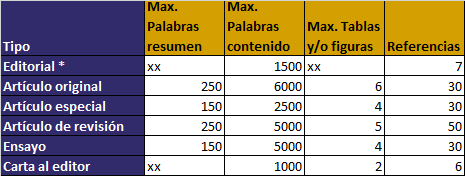Use of recyclable material as a teaching strategy and creativity of elementary school students
DOI:
https://doi.org/10.37711/desafios.2018.9.2.57Keywords:
Recyclable material, teaching strategy, creativity, students, elementary educationAbstract
Objective. To identify a correlation of recyclable material as didactic strategy in student’s creativity from 2nd grade of Elementary Education of I.E. “Matusita” of Huanuco, 2018. Method. It was a study with a quantitative approach, of a prospective, analytical, cross-sectional and observational type. The sample comprised 45 students from I.E. “Matusita” of Huanuco. Prior their parents’ consent. An observation guide on the use of recyclable material and creativity was applied. It was previously validated. Hypothesis was verified using the Kendall’s Tau-b test, considering a p <= 0.05. Ethical considerations were taken into account. Results. Use of recyclable material in 68.9% (31) of the study sample was an outstanding achievement. At creativity level, 33.3% (15). It was of a good standard. By contrasting study hypotheses, a relationship was found between the variables use of recyclable material as a teaching strategy and creativity in the fluency dimension (p = 0.0419) and elaboration (p = 0.022). No relationship was found between the use of recyclable material as a teaching strategy and creativity in general (p = 0.061), creativity in the flexibility dimension (p = 0.427) and originality (p = 0.237), rejecting the research hypothesis. Conclusion. Use of recyclable material by students in the 2nd grade of Elementary School is related to fluency and collaboration dimensions of creativity. It was the reason why the research hypotheses were accepted.
Downloads
Downloads
Published
How to Cite
Issue
Section
License
Copyright (c) 2021 Desafios

This work is licensed under a Creative Commons Attribution 4.0 International License.
a. Los autores conservan los derechos de propiedad intelectual (copyright) de las obras publicadas, cediendole a la revista el derecho de primera publicación.
b. Los autores retienen sus derechos de marca y patente, y también sobre cualquier proceso o procedimiento descrito en el artículo.
c. Los autores retienen el derecho de compartir, copiar, distribuir, ejecutar y comunicar públicamente el artículo publicado en la RD (por ejemplo, colocarlo en un repositorio institucional o publicarlo en un libro), con un reconocimiento de su publicación inicial en la RD.
d. Los autores retienen el derecho a hacer una posterior publicación de su trabajo, de utilizar el artículo o cualquier parte de aquel (por ejemplo: una compilación de sus trabajos, notas para conferencias, tesis, o para un libro), siempre que indiquen la fuente de publicación (autores del trabajo, revista, volumen, número y fecha).
























